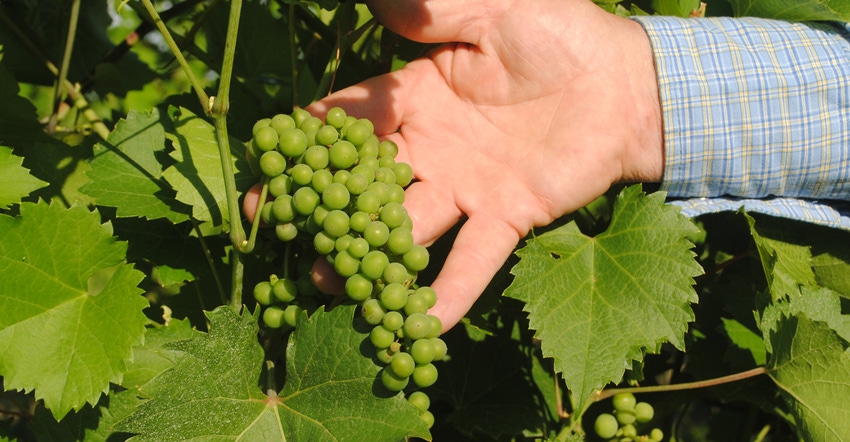December 28, 2021

If you ask a non-Nebraskan what the Cornhusker State is known for, you’ll likely hear the staple answers of corn, cows and, of course, football. However, as Huskers, we know there’s more to our great state than just that.
Nebraska has a wonderful and unique history. The state is home to Arbor Day, the country’s lone unicameral, Kool-Aid and the country’s largest rainforest. Nebraska also developed and first used the 911 emergency system. The list goes on and on.
Perhaps what gets the most quizzical looks, however, is that Nebraska is home to a thriving grape and wine industry, with an interesting history of its own.
As a member of LEAD 16, I experienced many surprised looks while traveling across the state, the country and even the world, sharing my experiences as a grape grower and winemaker from the Midwest.
Great grape adventure
Our venture began in 1994 when I convinced my father-in-law, James Arthur Jeffers, to plant 100 vines on his land near Raymond, Neb., as a hobby. The next spring they were still alive, so we decided to put a few more hundred vines in. Soon our hobby led to James Arthur Vineyards, Nebraska’s largest and oldest operating winery, opening in 1997 as the state’s second winery.
In 25 years of operation, we’ve welcomed thousands of guests to our tasting room, including people from all 50 states and more than 60 countries. Surrounded by nearly 20 acres of vines, we also buy grapes from growers across the state, making our final product truly unique to Nebraska.
Growing grapes in what was once known as the Great American Desert isn’t anything new. In fact, there was once a thriving grape industry in the southeast corner of the state. Early settlers brought vines with them from the eastern part of the country.
A small but flourishing grape and wine industry was evident by the late 19th century, with about 5,000 acres being reported in the early 1900s.
Prohibition takes effect
The start of World War I, followed by Prohibition, led to the demise of the industry. When Prohibition was repealed in 1933, the country was in the depths of the Great Depression, and the Dust Bowl conditions made the once flourishing industry quickly become an afterthought.
Nearly a half-century went by before the Nebraska Legislature passed the Nebraska Farm Winery Act in the early 1980s, opening the door for farm wineries. This created a renaissance of vineyards and wineries across the state that has evolved over the past two decades.
Today, there are 36 wineries and nearly 400 acres of grapes dotting Nebraska’s landscape. In 2013, a study showed that the Nebraska grape and wine industry had a $150 million impact on the state’s economy, making it a very viable and important nontraditional crop for the state and many of its small communities.
As the industry began to lay down new roots, we discovered we could not only grow grapes in Nebraska, but we could also make very good wine. At James Arthur Vineyards, we’ve built quite a resume for the honors we have received. Over the years, we’ve earned “Best of Show” honors (sometimes competing against tens of thousands of wines from across the globe) in Florida and California.
The winery’s most popular wine, Edelweiss, has been featured in Wine Spectator and earned two prestigious Jefferson Cup awards. Along the way, there have also been a number of “Best of Classes” and numerous “Double Gold” medals.
The industry is driven by the Nebraska Winery and Grape Growers Association. NWGGA conducts an annual conference and is instrumental in the marketing and promotion of the industry. You don’t have to look very far to find unique and appealing wines.
The pioneers who brought their traditions to the Cornhusker State would be proud of the quality and passion demonstrated by modern-day winemakers.
Ballard is a graduate of LEAD Class 16.
You May Also Like




